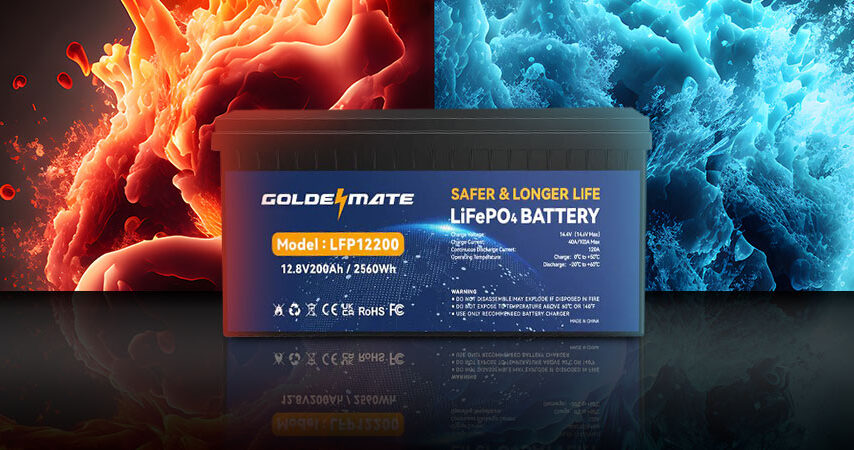Lithium-ion batteries have become ubiquitous in our modern lives, powering everything from smartphones and laptops to electric vehicles. Their lightweight design, high energy density, and rechargeable nature make them the preferred choice for various applications. However, as we rely increasingly on these batteries, it becomes crucial to understand their behavior in different environmental conditions.
One critical aspect often overlooked is the impact of temperature on lithium-ion batteries. These powerhouses are sensitive to temperature variations, and their performance can be significantly affected by extreme cold or hot conditions. In this article, we delve into the specific concern: Can lithium-ion batteries freeze, and if so, what are the implications?
Understanding Lithium-Ion Batteries
A. Composition and Working Principle
Lithium-ion batteries consist of positive and negative electrodes separated by an electrolyte. The movement of lithium ions between these electrodes during charging and discharging generates electrical energy. Understanding this basic composition is crucial to grasp how temperature affects the battery’s internal processes.
B. Temperature Sensitivity of Lithium-Ion Batteries
Lithium-ion batteries exhibit temperature sensitivity, and their performance is optimized within a specific temperature range. Extreme temperatures can lead to a range of issues, including reduced capacity, slower charging, and, in the case of freezing temperatures, potential structural damage.
C. Optimal Operating Temperature Range
The optimal operating temperature for lithium-ion batteries typically falls between 15°C to 25°C (59°F to 77°F). Deviating from this range can impact the battery’s efficiency and overall lifespan.
Freezing Point of Lithium-Ion Batteries
A. Definition of Freezing Point
Before delving into the freezing point of lithium-ion batteries, it’s essential to understand what freezing point means. In the context of batteries, it refers to the temperature at which the electrolyte inside the battery solidifies, potentially causing irreversible damage.
B. Factors Influencing the Freezing Point of Lithium-Ion Batteries
Several factors influence the freezing point of lithium-ion batteries, including the specific electrolyte used and the battery’s state of charge. High concentrations of certain electrolytes can lower the freezing point, but it’s crucial to consider the overall battery composition.
C. At What Temperature Do Lithium-Ion Batteries Freeze?
While the freezing point can vary based on battery chemistry, a general guideline is that lithium-ion batteries can start experiencing issues below -20°C (-4°F). At temperatures lower than this threshold, the risk of electrolyte solidification and subsequent damage increases significantly.
Risks Associated with Freezing Lithium-Ion Batteries
A. Structural Damage to Battery Components
Freezing temperatures pose a risk of structural damage to various components within lithium-ion batteries. When the electrolyte freezes, it expands, potentially causing the battery casing to rupture. This structural damage can compromise the overall integrity of the battery. Explore the intricacies of lithium-ion batteries, from their composition to the impact of freezing temperatures. Gain more details on the risks associated with cold exposure, precautionary measures, real-world examples, and cutting-edge technologies shaping the future of battery resilience. Dive into the comprehensive guide now.
B. Impact on Battery Performance and Capacity
Beyond structural damage, freezing temperatures can affect the electrochemical processes happening within the battery. This can lead to a decrease in the battery’s capacity and overall performance. Users may notice reduced runtimes, slower charging times, and increased internal resistance.
C. Safety Concerns and Potential Hazards
Safety is a paramount concern when dealing with lithium-ion batteries. The structural damage and altered electrochemical processes resulting from freezing temperatures can create conditions for thermal runaway – a situation where the battery temperature escalates uncontrollably, potentially leading to a fire or explosion.
Precautions to Prevent Lithium-Ion Batteries from Freezing
A. Storage Guidelines for Extreme Temperatures
Proper storage is crucial to safeguard lithium-ion batteries from freezing temperatures. When storing batteries in cold climates, it’s advisable to keep them in insulated containers or use temperature-controlled storage solutions. Additionally, storing batteries at partial charge rather than fully charged can mitigate the risk of damage.
B. Transportation Precautions
Transporting lithium-ion batteries in extreme temperatures requires careful planning. Insulating the batteries within packaging materials that provide thermal protection can help maintain a stable temperature during transit. It’s also essential to avoid leaving batteries in vehicles exposed to harsh weather conditions.
C. Use of Battery Heaters and Insulation
In situations where exposure to freezing temperatures is unavoidable, the use of battery heaters becomes crucial. These devices, often integrated into battery packs or enclosures, actively maintain the battery’s temperature above the freezing point. Proper insulation also plays a vital role in preserving the battery’s warmth.
Real-World Examples and Case Studies
A. Instances of Lithium-Ion Batteries Freezing
Examining real-world instances where lithium-ion batteries have frozen provides valuable insights. These cases can range from consumer electronics left in freezing conditions to electric vehicles operating in extreme climates.
B. Consequences and Lessons Learned
Analyzing the consequences of frozen lithium-ion batteries sheds light on the importance of precautionary measures. Whether it’s financial losses, environmental impact, or safety hazards, learning from past incidents is crucial to preventing future occurrences.
C. Industry Practices to Mitigate Freezing Risks
Industries reliant on lithium-ion batteries have developed best practices to mitigate freezing risks. These can include advanced thermal management systems, improved battery designs, and adherence to strict temperature guidelines during storage and transportation.
Solutions and Technological Advances
A. Innovations in Battery Design to Resist Freezing
The ongoing evolution of battery technology includes innovations aimed at improving resistance to extreme temperatures. Researchers and manufacturers are exploring materials and designs that can withstand freezing conditions without compromising performance.
B. Cold-Weather Packaging and Insulation
Cold-weather packaging solutions, incorporating advanced insulation materials, are being developed to protect lithium-ion batteries during storage and transportation. These packaging innovations aim to create a thermal barrier that shields batteries from harsh external temperatures.
C. Emerging Technologies to Address Freezing Concerns
Beyond incremental improvements, emerging technologies show promise in addressing freezing concerns. From self-heating battery systems to smart thermal management, these advancements aim to make lithium-ion batteries more resilient in diverse environmental conditions.
Regulatory Standards and Guidelines
A. Overview of Existing Regulations Related to Lithium-Ion Battery Storage and Transportation
Government agencies and international bodies have established regulations to ensure the safe handling and transportation of lithium-ion batteries. Understanding and complying with these regulations are crucial for manufacturers, distributors, and end-users.
B. Compliance with Industry Standards
In addition to governmental regulations, industry standards play a pivotal role in setting guidelines for the manufacturing, storage, and transportation of lithium-ion batteries. Adhering to these standards is essential for maintaining safety and quality.
C. Future Developments in Regulations
As technology evolves, so do regulations. Anticipating future developments in regulations related to lithium-ion batteries is essential for stakeholders in the industry. These developments may include more stringent temperature-related guidelines or specific requirements for emerging technologies.
Conclusion
In conclusion, as we delve deeper into the intricacies of lithium-ion batteries and their behavior in freezing temperatures, it becomes clear that a comprehensive understanding of these power sources is essential. By addressing the risks and implementing effective precautions, we pave the way for a future where lithium-ion batteries can power our devices and vehicles reliably, regardless of the climate.








